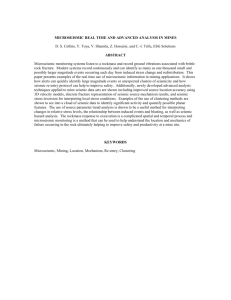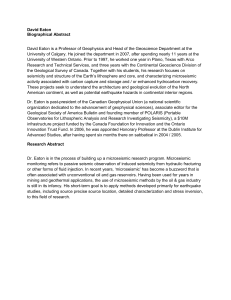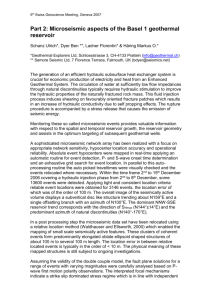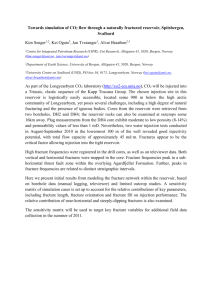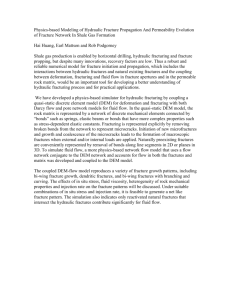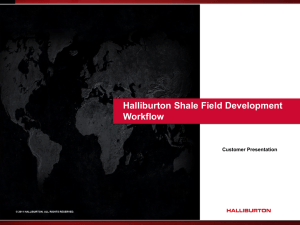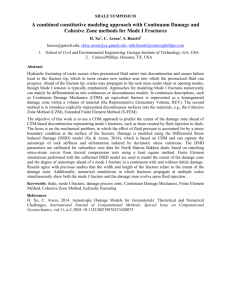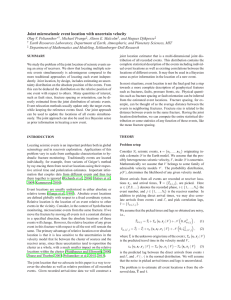Click here - DFNE 2014
advertisement
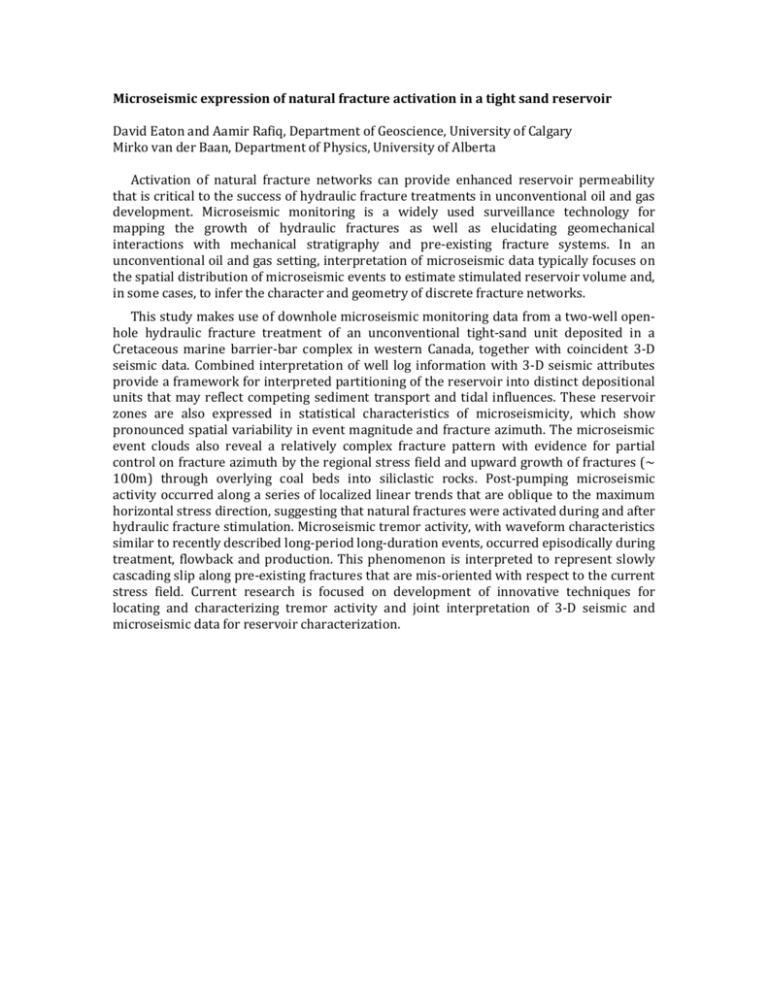
Microseismic expression of natural fracture activation in a tight sand reservoir David Eaton and Aamir Rafiq, Department of Geoscience, University of Calgary Mirko van der Baan, Department of Physics, University of Alberta Activation of natural fracture networks can provide enhanced reservoir permeability that is critical to the success of hydraulic fracture treatments in unconventional oil and gas development. Microseismic monitoring is a widely used surveillance technology for mapping the growth of hydraulic fractures as well as elucidating geomechanical interactions with mechanical stratigraphy and pre-existing fracture systems. In an unconventional oil and gas setting, interpretation of microseismic data typically focuses on the spatial distribution of microseismic events to estimate stimulated reservoir volume and, in some cases, to infer the character and geometry of discrete fracture networks. This study makes use of downhole microseismic monitoring data from a two-well openhole hydraulic fracture treatment of an unconventional tight-sand unit deposited in a Cretaceous marine barrier-bar complex in western Canada, together with coincident 3-D seismic data. Combined interpretation of well log information with 3-D seismic attributes provide a framework for interpreted partitioning of the reservoir into distinct depositional units that may reflect competing sediment transport and tidal influences. These reservoir zones are also expressed in statistical characteristics of microseismicity, which show pronounced spatial variability in event magnitude and fracture azimuth. The microseismic event clouds also reveal a relatively complex fracture pattern with evidence for partial control on fracture azimuth by the regional stress field and upward growth of fractures (~ 100m) through overlying coal beds into siliclastic rocks. Post-pumping microseismic activity occurred along a series of localized linear trends that are oblique to the maximum horizontal stress direction, suggesting that natural fractures were activated during and after hydraulic fracture stimulation. Microseismic tremor activity, with waveform characteristics similar to recently described long-period long-duration events, occurred episodically during treatment, flowback and production. This phenomenon is interpreted to represent slowly cascading slip along pre-existing fractures that are mis-oriented with respect to the current stress field. Current research is focused on development of innovative techniques for locating and characterizing tremor activity and joint interpretation of 3-D seismic and microseismic data for reservoir characterization.
